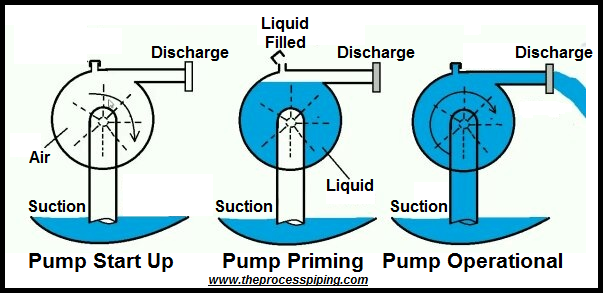Whether you have a small water pump or a large centrifugal pump, it's important to understand how to prime the pump. Using proper priming techniques will ensure that your pump can perform at its best. However, improper priming can lead to serious financial consequences.

Priming a pump is a critical step that should be taken before any pumping operation begins. Not priming your pump can cause your pump to break down and could also cause a leak in the piping system. In addition, priming can prevent air from being drawn into your pump, causing an air bind.
Priming a pump involves filling the pump with liquid. This can be done manually or automatically. Using a manual priming method involves pouring liquid directly into the pump suction. This can be done using a funnel or gravity feed. The use of a gravity feed method allows you to pour liquid in a pump without the risk of evaporating the liquid.
Priming a water pump is a critical step that should be taken before any pumping operation begins. The process involves filling the pump with liquid and expelling air from the suction line. If the pump is not primed, an alarm will sound. The goal of priming the pump is to restore the pressure and restore the pump's ability to pull water.
You can priming your pump by manually filling it with liquid, or you can use an external arrangement. External arrangements include a pump priming valve, or a positive displacement pump. A positive displacement pump will vacuum air out of the suction line of a pump. The pump is then placed in a priming mode, which lasts four minutes. After the pump has been primed, the user can exit the priming mode by pressing the temperature buttons.
In order to ensure that your pump is primed, you will need to check the pressure gauge in your pump. If the pressure is high, the pump may not operate properly. You will also need to make sure that the water in the tank is below the cut-out pressure. This pressure will depend on the water's weight. If the water tank pressure is above the cut-out pressure, your pump may not be able to lift water. You should also check for damage to the pump or the heating system, or for leaks if your pump has been shut down over winter.
When priming your water pump, make sure that the hose is properly attached to the fixture near the water tank. You may also need to make multiple attempts. If the pump is not running, you can open the relief valves.
You should also check the pressure gauge in your pump on a regular basis. If it is showing that the pressure is higher than the cut-out pressure, you should either shut down the pump or remove the hose from the fixture. Alternatively, you can check the pressure gauge on your pump to see if you can manually prime it.